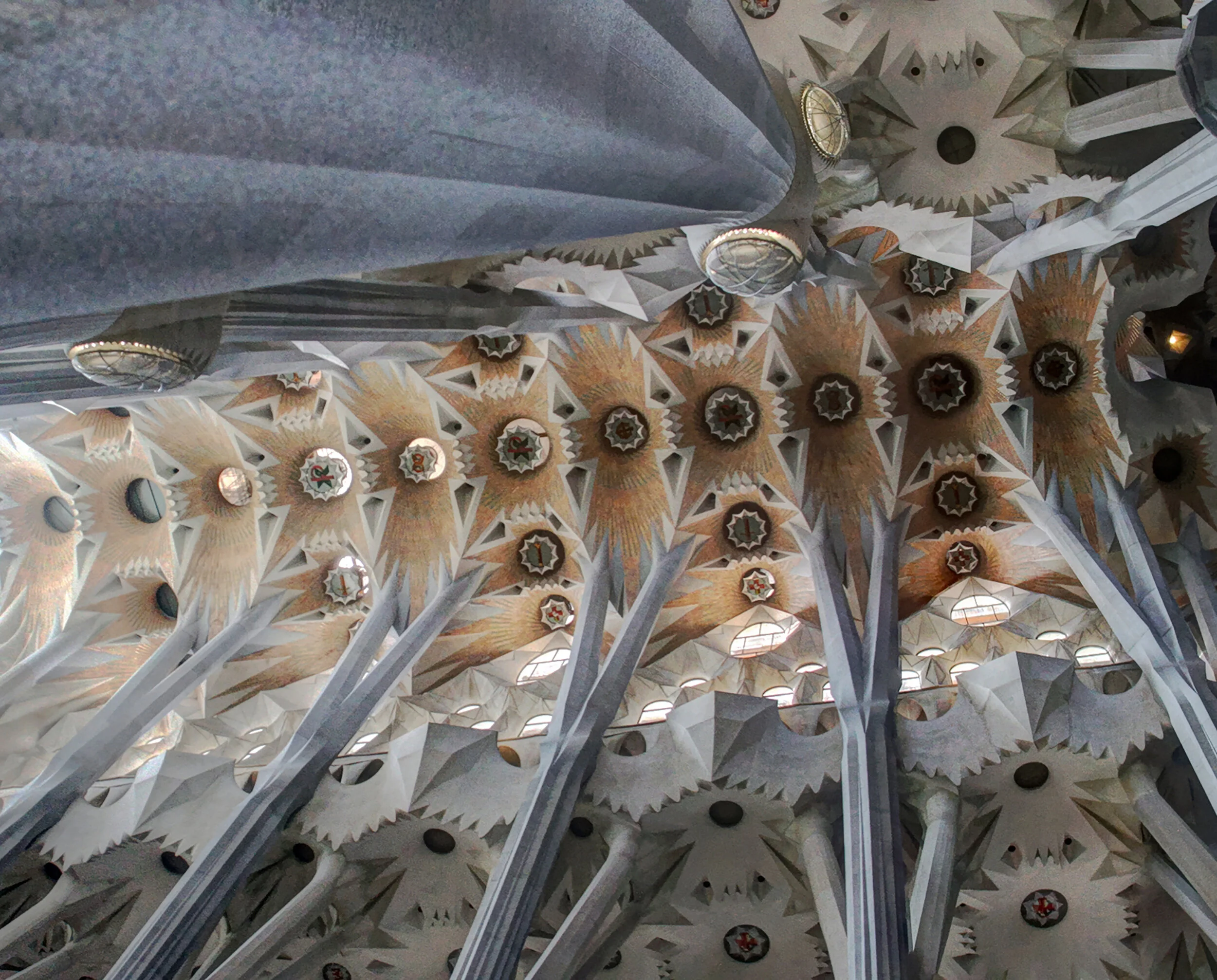
Page 8 of 9
Barcelona, Spain
On silver stars I wish and wish and wish
This is Sagrada Familia, the Church of the Holy Family, Antoni Gaudí's great unfinished masterpiece- a little more finished than I remember from the last time I was there.
Gaudí's church may be cathedral sized but it's most definitely not a cathedral. In the Roman Catholic church you need a bishop to make a church a cathedral, in fact the word cathedral literally means chair (as in the bishop's chair), at least according to my ninth grade World Cultures teacher. It does seem insanely stupid that such a big hard to build bishop-less church was even proposed in the first place when you come to think of it. Barcelona already has a historic medieval cathedral and no city really needs two., even if the second one includes an awesome turtle with a column on its back.
It takes a long time to build a cathedral sized church as big as Sagrada Familia. Antoni Gaudí started in 1883 and spent the last 43 years of his life working on it. And even with all of that time spent, it was not even half of the 145 years of construction that seem to be required (imagine what that Gantt Chart would look like). The not quite cathedral has optimistically another 15 years of construction scheduled, barely enough time to to build the most complicated facade (the Glory Facade) and start and finish the highest tower- at 560 feet that's as high as Montjuic and the tallest tower in all of Christendom (or more accurately, the tallest religious building in the world).
Flashback. My first visit to Sagrada Familia was back on September 9, 1997 when the towers (and stairs) were open but the nave was a little bit less finished. The walls behind the altar (pictured below) were standing, but that was about it. A shed stood on the altar site, there were areas of bad graffiti and a general hopelessness in terms of imagining the church might ever be finished (kind of like the feeling you get when visiting Arcosanti in Arizona). I do not recall anyone working on the church at all that day in 1997. Fast forward fourteen years and it's a whole different story. The church is overwhelmed by tourists (the disorganized line to buy tickets wrapped halfway around the outside block) and construction and cranes are everywhere.
These three pictures give you an idea of how much different things are in the Eixample after all these years. All three pictures show the same area, if you know where to look. The ones on the right are from my old Minolta APS point and shoot, a camera that was reasonably good by 1997 standards but nothing even close to acceptable in today's digital age.
This almost otherworldly panorama took 27 pictures to build. First I took bracketed (portrait) pictures at three different exposures, then I combined them in Photomatrix Pro into 9 HDR images and then stitched them using Photoshop Photomerge into one big (10472 x 4296, 20.9MB) picture. The final (reduced) result gives you a really good idea of standing in the transept, of seeing that forest of columns, of the insane amount of tiny people gawking at every turn, of Sagrada Familia.
The day that I visited, the elevators to the towers were closed (they used to let you push your way up the meter wide up/down stairs but now force you to take a lift up and the stairs down). A real shame but not the end of the world, I had been up them three times already and what I really came to see was the recently finished inside, a nave full of columns that lead up to a forest canopy of stone.
Even though I love the dreamlike interior of Sagrada Familia, I remain ethically concerned about whether or not it really should be built at all. The focus if my concern centers on two clear glass circular elevators that rise on either side of the front doors in the nave. Gaudí never could have even conceived of such a use of modern design and materials inside his church yet there they are, sleek glass elevators in a design that purports to be carrying out the vision of a long dead visionary. They remind me of other historic recreations that seem to shuffle historic integrity around when convenient, specifically the not too concealed sprinkler heads and recessed downlights at Dresden's resurrected Frauenkirche and the boring Kawneer storefront at Frank Lloyd Wright's not quite there Monona Terrace. An impossible to ignore blemish reminding you that what you're looking at may seem authentic but in reality is not.
That said, I remain in awe at seeing the interior (whether authentic or not), of having the honor of standing in a nearly completed nave, something that so many (including Gaudí himself) waited their entire lifetimes in vain for.

